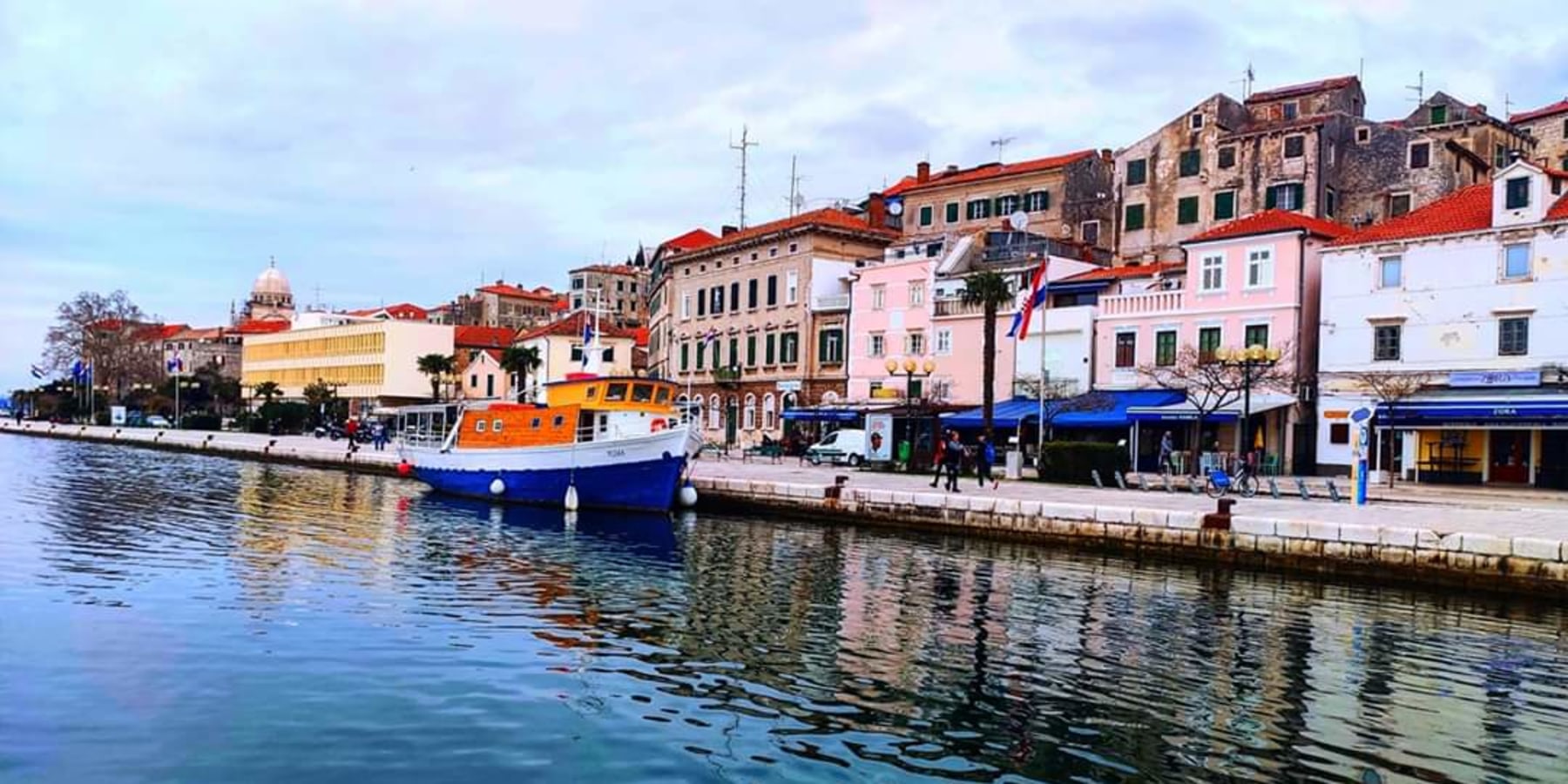
Šibenik is a historic city in Croatia located in Central Dalmatia where the River Krka flows into the Adriatic Sea. Sibenik is a political educational transport, industrial and tourist Center of Šibenik-Knin County and also the third-largest city in the historic region of Dalmatia. It is the oldest native Croatian town on the shores of the sea. There're multiple interpretations of how Sibenik was named. In his fifteenth-century book De situ Illiriae et civitate sibenici, Juraj Šižgorić describes the name and location of Sibenik. He attributes the name of the City to it being surrounded by a palisade made of šibe (sticks, singular siba). Another interpretation is associated with the forest through the Latin toponym Sibinicum which covered a narrower microregion within Sibenik on and around the area of St. Michael's Fortress.
Unlike other cities along the Adriatic coast, which were established by Greeks, Illyrians and Roman's, Sibenik was founded by Croats. Excavations of the Castle of St. Michael, have since proven that the Place was inhabited long before the actual arrival of the Croats. It was mentioned for the first time under its present name in 1066 in a Charter of the. Croatian King Petar Krešimir lV and for a period of time, it was a Seat of this Croatian King. For that reason, Šibenikis also called Krešimirov grad (Krešimir's City).
Between the 11th and 12th centuries, Sibenik was conquered by the Republic of Venice in 1116, who held it until 1124, when they briefly list it to the Byzantine Empire and then held it again until 1133 when it was retaken by the Kingdom of Hungary. It would change hands among the aforementioned states several more times until 1180.
Under Venice and the Habsburgs
The city like rest of Dalmatia initially resisted the Venetian Republic, but it was taken over after a three-year war in 1412. Under Venetian rule, Sibenik became in 1412 the seat of the main customs office and the seat of the salt consumers office with a monopoly on the salt trade in Chioggia and on the whole Adriatic Sea.
The Morlachs started setting Sibenik during the Cretan war (1645-69). The fall of the Republic of Venice in-1797 brought Sebenico under the authority of the Habsburg Monarchy. After Congress of Vienna until 1918, the town was again part of the Austrian monarchy (Austrian side after the compromise of 1867), head of the district of the same name on of Bezirkshauptmannschhaften in the Kingdom of Dalmatia.
In 1872 at the time in the Kingdom of Dalmatia Ante Šupuk became the town's first Croat mayor elected under Universal suffrage. He was instrumental in the process of the modernization of the city and is particularly remembered for the 1895 Projecta to provide Street lights powered by the early AC Jaruga Hydroelectric Power Plant.
On 28 August 1895 Sibenik became the world's first city with alternating current-powered street lights. The Central church in Sibenik, the Cathedral of St. James is on the UNESCO World Heritage list. Several successive architects built completely in Stone between 1431 and 1536 both in Gothic and in Renaissance style. The interlocking stone slabs of the Cathedral's roof were damaged when the city was shelled by Yugoslav forces in 1991. The damage has since been repaired.
Fortifications in Sibenik:
Cathedral of st.James
St. Nicholas Fortress
St. Michael's Fortress (in the historic Town centre)
St. John Fortress
Barone Fortress
Roughly 18 kilometres (11mi) north of the City is the Krka National Park, similar to the Plitvice Lakes National Park, known for its many waterfalls, flora, fauna, and historical and archaeological remains.
The Kornati Archipelago, west of Sibenik, consists of 150 Islands in a sea area of about 320 km2 (124 sq mi), making it the densest archipelago in the Mediterranean Sea.

